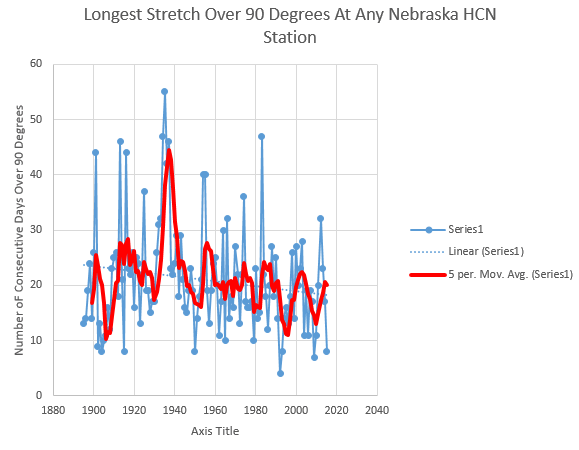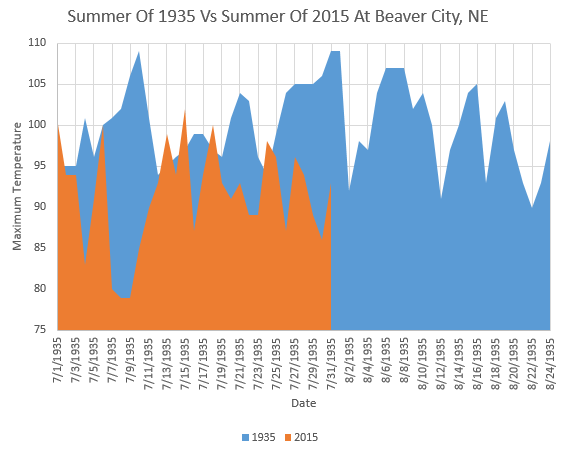Nebraska used to have frequent long heatwaves, but they rarely happen any more. The years 1934, 1935, 1936 and 1937 all had stretches over 90 degrees for more than 40 consecutive days.
During the summer of 1935, Beaver City, NE had 55 consecutive days over 90 degrees, including many days over 105 degrees. This past summer (which NOAA says was the hottest ever) averaged about 10 degrees cooler than 1935.




I did a similar analysis for Lincoln Nebraska using the University’s own (Cornhusker) records that go back to 1887. No ‘adjustments’. Record max, days over 90, days over 100, first day over 90, summer precipitation. 1930’s were brutal hot. Nothing to remark since, just as you show here. Published in the climate chapter of The Arts of Truth. If you want to repost here, I’ll waive copyright and send you the Excel analyses in exchange for source acknowledgement.
I have done the same for many locations here in Minnesota and also at a broad spectrum of locations across the United States. Always the same result.
As you know, the current motto in climate science (and most all of science) is publish or perish.
Therefore, the current tendency is to say ‘Climate Change’ go past go and collect 200K for the study.
The thinking seems to be that nothing ever changed until the advent of fossil fuel usage, and before that there was some sort of Eden.
So the studies simply take a small snapshot in time of some event and say look what is happening.
Well, of course it is. Up here, down there. Warm here, cool there. Stormy here, calm there.
Then of course if history is not convenient, ask someone Like Michael Mann to change it.
I just checked WunderGround for the forecasts for the central coast, California, and see an October, November, and December of high 80s, 90s, and 100s! And nights in the 30s. Nothing unusual for warm October and early November, but not on until January…Also some rain with those hig/low temps! What can you geniuses tell me about this? Sounds pretty awful.
I thought 1935 was an off year for heat between the absolutely horrific summers of 1934 and 1936. Apparently not.